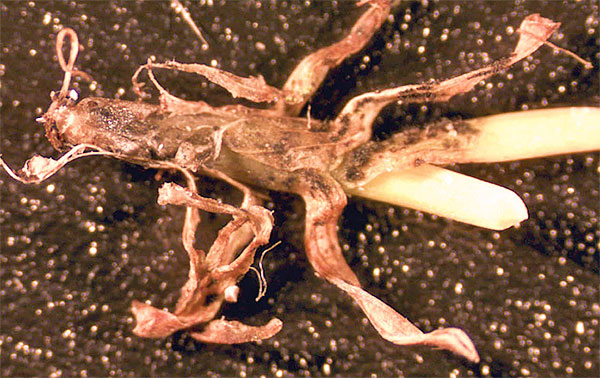The Two Phases of Anthracnose Disease
The foliar blight phase affects the leaf blades, and the crown rot anthracnose phase affects the base of the turf and lower stems of grass blades.
Recognizing the symptoms of anthracnose will help you to treat the disease quickly, since if you don't start to treat anthracnose it the early stages, it can be very hard to control.Foliar Blight Phase

- Affected turf will begin to turn yellow or yellow orange, and begin to decay from the top of the leaves down.
- Tan lesions may appear, with dark spore structures that look fuzzy.
- The lesions are an indication that the disease is progressing.
- Affected turf can occur in clusters of varying size.
- While many turf diseases begin with yellowing grass, the dark spore structures (called acervuli) are an indication of anthracnose, and will be the calling card of this particular turf disease.
Crown Rot Phase

- Grass will turn yellowish-orange, just as with the foliar blight phase.
- The lower stems of the grass will begin to rot, which appears dark and wet.
- Grass can be easily pulled up from the ground, since it is actively rotting away.
- There will also be dark, blackened necrotic spots on the affected leaf blades.




